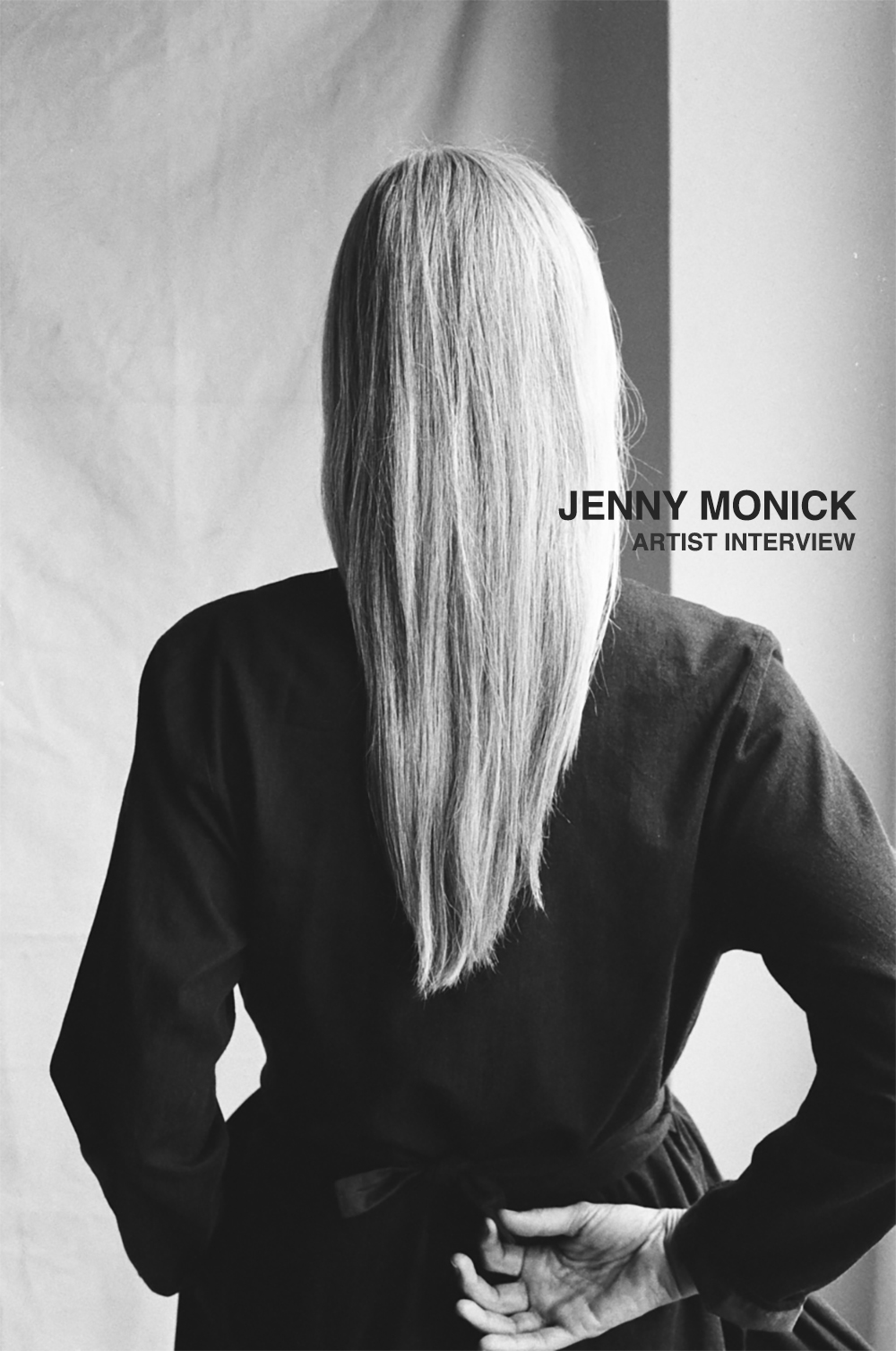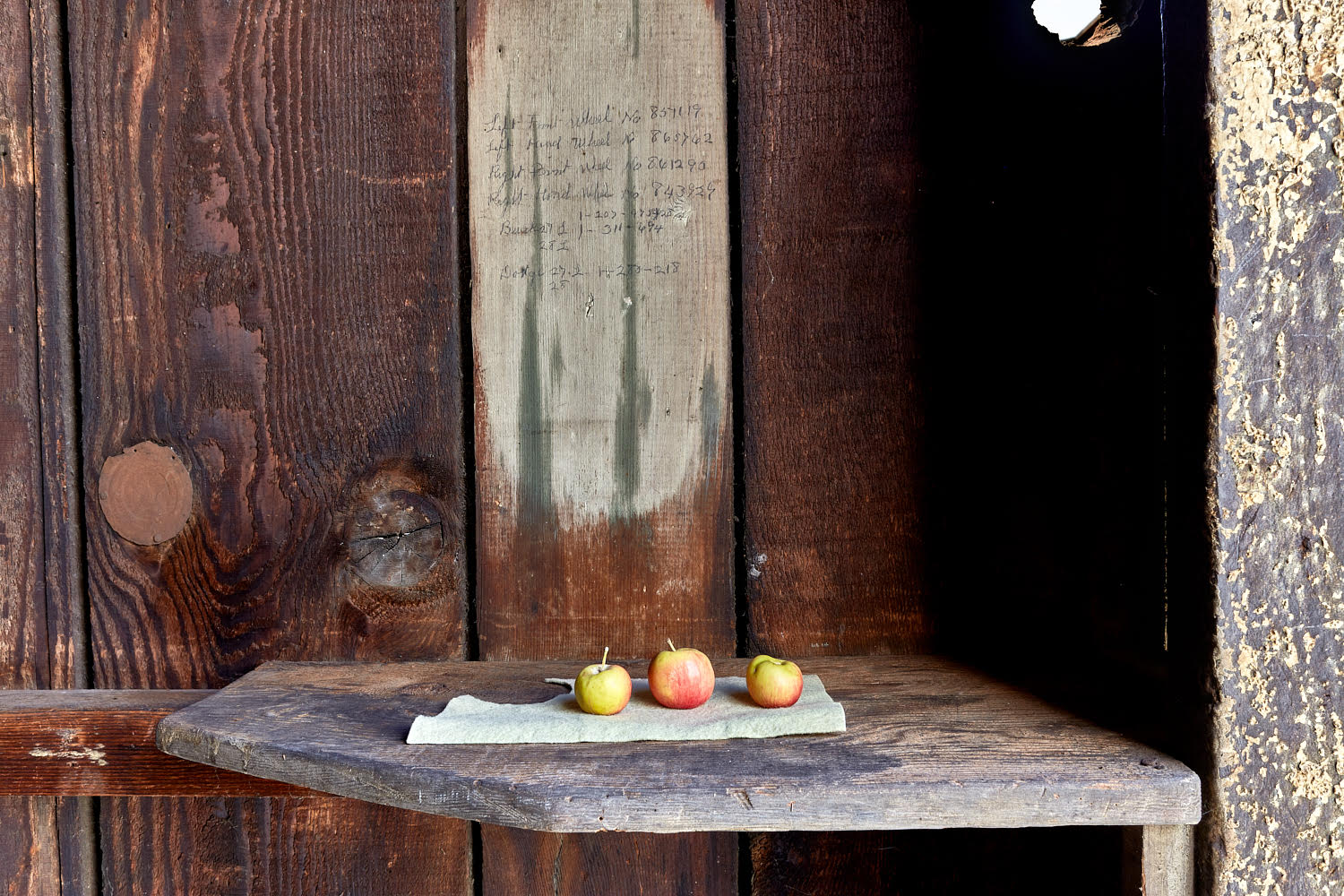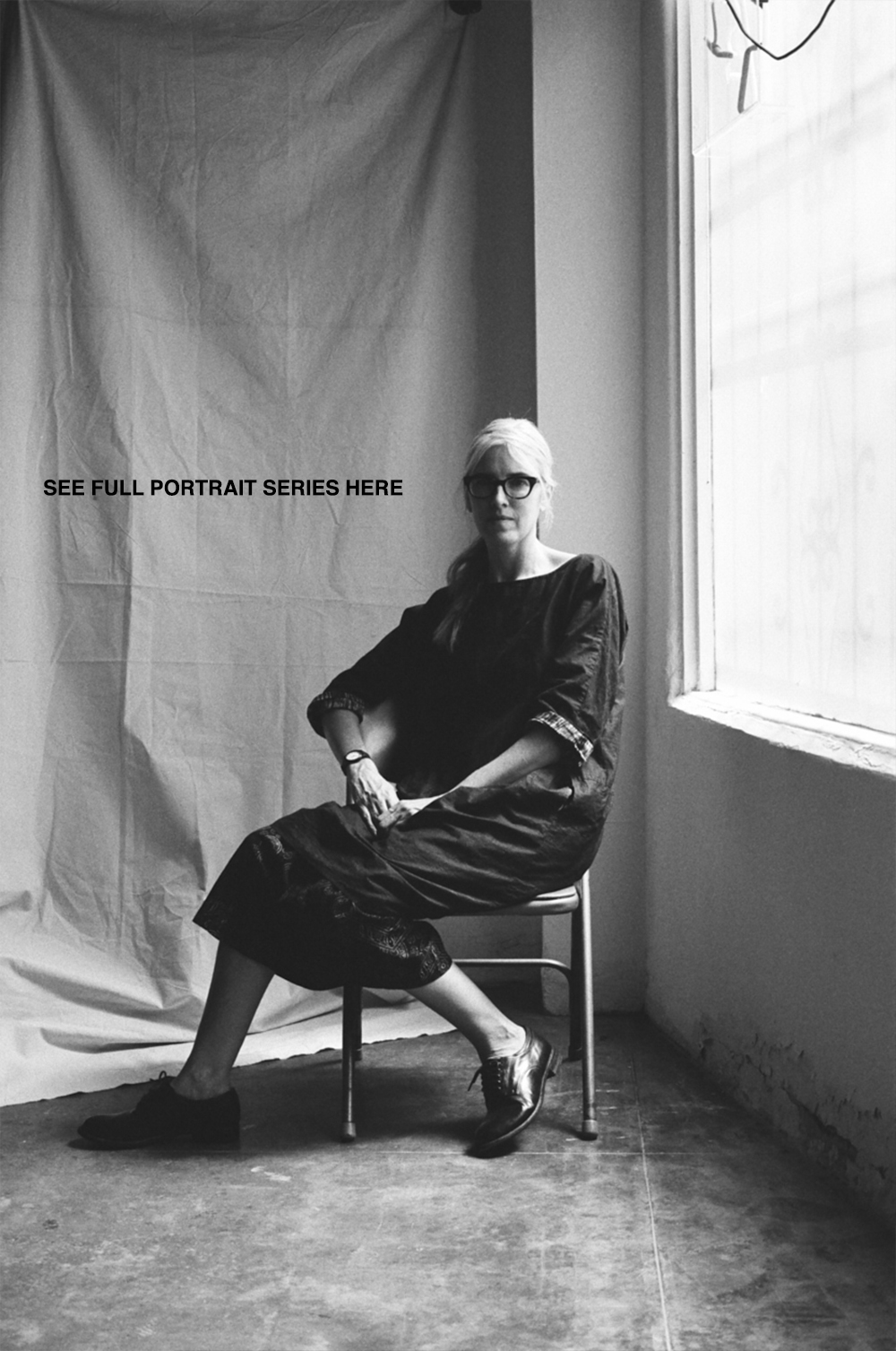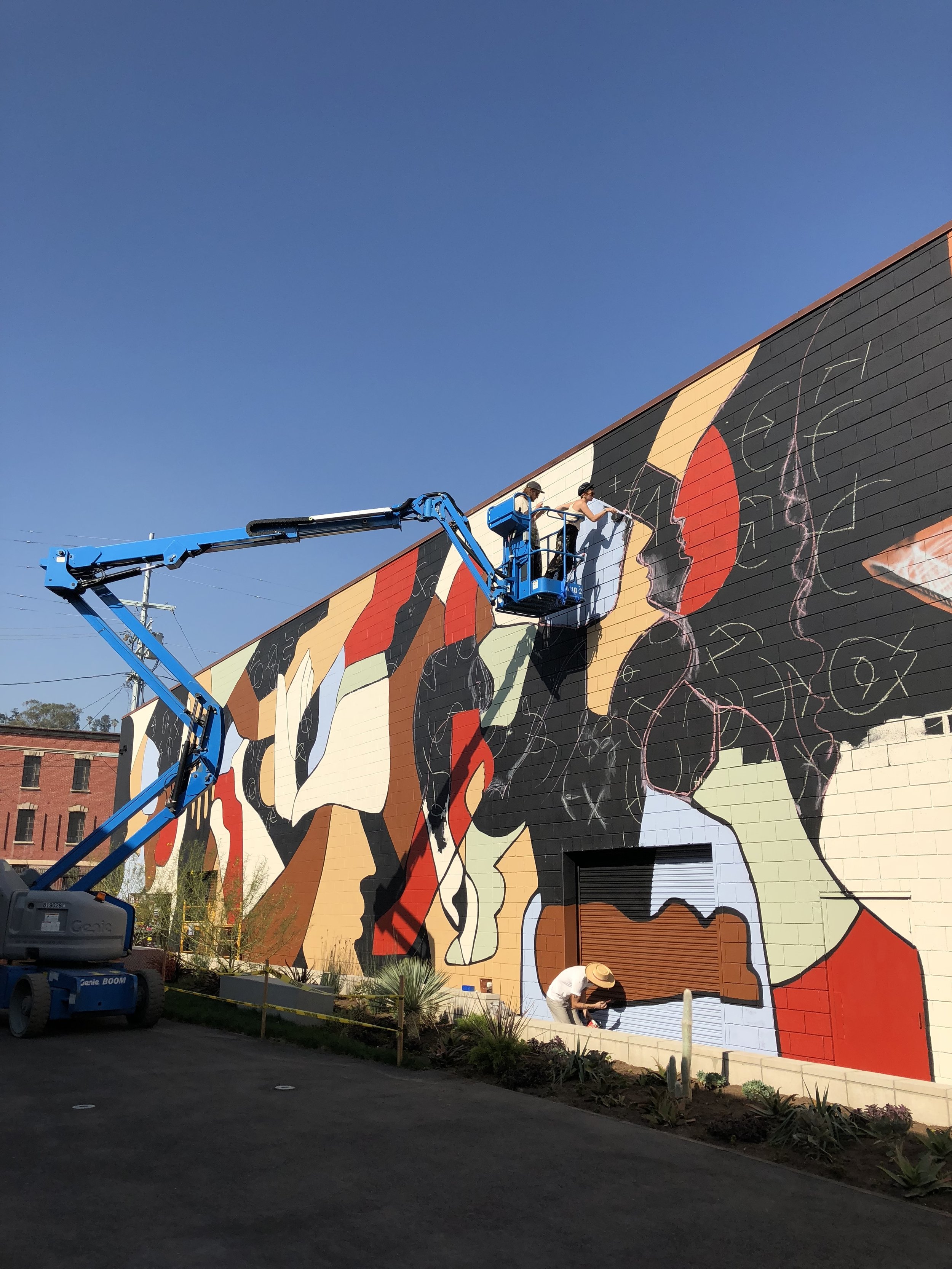MDLF: What is your name?
JM: Jenny Sprague Monick
MDLF: If you could describe yourself in one word, what would it be?
JM: Impossible
MDLF: Where do you live? Which cities do you most frequently go to and why? Are you more drawn to one place or culture?
JM: I live in Brooklyn, NY. I most frequently visit Los Angeles, CA. I feel best near enormous bodies of water and at cultural crossroads.
MDLF: If you can, tell us three things that bring you joy
JM: Joy is a capital letter word - it could be anything, so I can’t tell, really.
Name Of Piece: Still life with yellow
Size of piece: 11 x 14"
Medium: Oil on linen
Photographed by: Paul Takeuchi
Location, Year: New York, NY 2017
MDLF: Can you tell us about any artist or person living or dead that inspires you.
JM: Most of my love goes to Piet Mondrian, who was also a Pisces, clearly. What is left over, which is a lot, goes to many many artists and other people, animals, plants, acts of nature, celestial bodies, etc.
MDLF: When did you first identify being an artist? When did you start creating? Did you foresee a creative path in your childhood?
JM: My childhood bedroom was my first creation. A furtive, almost invisible Total Work of Art, I did what I could, as it needed to appear a proper bedroom to the adults who were a little too frequently dropping by. I didn’t want to have to answer any questions.
I also had a dollhouse (the ‘family’ was quickly dispatched to sit amongst some broken furniture in the attic, they felt a little creepy and irrelevant) and in the house we lived in, any shelf, closet, toolbench, or cupboard I could arrange and rearrange was an expressive opportunity.
Later, visiting the old MoMA, when I was 12 or so, the room with the Water Lilies, The Japanese Footbridge, a grey low pile carpet, and leather and wood benches along a full wall of windows facing North. It was perfect. It was a perfect room, a Poetic Image, I understood, despite knowing nothing formally about what any of it was. Unfortunately my enthusiasm was taken as an interest in French Impressionism, which it decidedly was not. But I still have a poster of the Monet in this same childhood bedroom, in the house my parents have lived in since I was born. And from then on I felt on a path.
Name Of Piece: Lining
Size of piece: 15 x 23"
Medium: C-print
Photographed by: Gedi Sibony
Location, Year: 2001, Long Island, NY,
MDLF: How often do you create? What motivates you to keep practicing?
JM: Not sure.
MDLF: What challenges have you been met with while moving through a work in progress?
JM: It is all a challenge. It’s knowing when the difficulty is clear, and when it is unclear. If I can get a grip on what the problem is, I can probably solve it. If I’m not sure what the problem is, I’m pretty lost. Which is fine too, for a while…
MDLF: What accomplishments are you most proud of?
JM: For one, my work with children. I was at one time the curator of a gallery set up to display children’s art made at public schools receiving grants from a particular not-for-profit. The openings were a gas and thrilling and also very moving. Pint sized dressed up artists and their adults….
MDLF: Can you share with us your creative process? Where does your mind go, what is your creative space like, what are your go-to-tools, when is a piece finished?
JM: Do you know the one about the dancing centipede and the jealous daddy long legs? It’s like being both.
Name Of Piece: Stilll life with songs
Size of piece: Variable
Medium: Cassette player and cassette tape
Photographed by: Veli-Matti Hoikka
Location, Year: Reserve Ames, Los Angeles, CA, 2017
MDLF: Did you go to art school? If so, what are your thoughts on its effect on your art and process, Would you recommend it for others?
JM: No. I often wish I had, and as often I am glad I didn’t! I took classes as an undergrad at Columbia and then later night classes, Continuing Education at Cooper Union, which were taught by recent MFA graduates from Yale. Meanwhile I worked for artists. Those jobs were helpful, too, to see how it all works, privately and professionally. Later I was an early childhood art teacher. That is where I picked up the most inspiring informative/formative stuff. I think art school is probably a good idea…it is really hard to say.
MDLF: Can you describe your first painting/piece that defined your style of painting? How about your favorite work/piece/or show, how long did it take, what was your process, and where can we see it?
JM: Not sure.
MDLF: What is your perception of gender?
JM: I mean...I’m extremely glad this notion is being pried open…peeled, eviscerated, even.
Name Of Piece: Still life with apples
Size of piece: variable
Medium: Apples and felt
Photographed by: Veli-Matti Hoikka
Location, Year: Reserve Ames, Los Angeles, CA, 2017
MDLF: What does Masculine de La Femme mean to you? Can you apply this meaning to your art or lifestyle?
JM: Language is a tough nut.
MDLF: Is your work changing in the current political climate? How so?
JM: Well, we are in some kind of wilderness, here…
…Work-wise, climate is the question, for me, more than political. I wonder a LOT about - things - facture - do I need to make it physical, material, do I need to make it at all - I am a dedicated winnower - , especially now as we are sort of drowning in stuff… Noah Purifoy - … I think about him - just as a starting point… What is value? What is of value?
MDLF: If you could sit down with your younger self, what would you say? What learning experience can you share with young women looking to be an artist or figuring out where they are needed most?
JM: Read Uses of the Erotic:The Erotic as Power by Audre Lorde, and re-read often.
Pin up the Immaculate Heart College Art Department Rules, somewhere prominent.
MDLF: Where can we view more of your work?
JM: jennymonick.com
Artist, Jenny Monick
Photography by Dan Monick , all shot on black and white film
Art Direction and Wardrobe Styling by Monica Reyes
Featured Brands : Elsa Esturgie, Pas de Calais, Mixed Business











